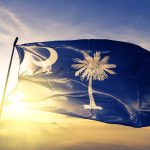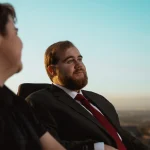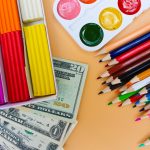June 8, 2020
By Mark Flatten
Speed limits may make us safer, but not safe. Crash helmets make skydiving safer, but not safe. Even a “safety” makes a gun safer, but not safe. Yet somehow we all manage, in normal times, to go about our lives, knowing we are taking risks all the time. This is worth keeping in mind as we decide when we can emerge from COVID-19 lockdowns and begin resuming normal lives.
In our national coronavirus conversation, we are told that drugs that might treat the virus, or vaccines that might prevent it, are unsafe. We are told that going back to work, reopening businesses, worshiping, or having friends over for dinner is unsafe. But of course, while there is more safe and less safe, there is no “safe.”
Many of the laws, regulations, and rules that are supposed to keep us safe end up doing more harm than good. That’s true in the COVID crisis, and many were suspended in emergency orders. It was also true before the virus emerged.
Start with finding a treatment: With all the regulatory red tape and bureaucracy, it normally it takes more than a decade and costs more than $1 billion to get a new drug approved. Clearly, we don’t have a decade to deal with COVID-19. So instead, those seeking a cure or treatment are exploring ways to repurpose existing drugs. The two that receive the most attention are hydroxychloroquine and remdesivir. Both have shown mixed results in early studies. Both come with potentially dangerous side effects, but both have gotten emergency authorizations for their use outside of clinical trials by the U.S. Food and Drug Administration (FDA).
Hydroxychloroquine has gotten tangled up in partisan politics, which reached a fevered pitch when President Trump announced in May that he’d been taking it to prevent contracting the virus. That drew renewed warnings from critics that hydroxychloroquine is unsafe and ineffective.
What “unsafe” means in this context is that a particular drug has not been approved by the FDA to treat COVID-19. Hydroxychloroquine was first approved by the FDA in 1955, and is widely used to treat malaria, lupus, and rheumatoid arthritis. So in that respect, it has been deemed “safe” by the FDA, and its risks are well known. What’s in doubt is whether either drug is effective in combatting the virus.
Is it safe? No. All drugs have risks. Even aspirin can cause severe bleeding in some patients, yet it arguably has prevented more heart attack deaths than any other medication in history.
When the FDA is assessing whether to approve a drug to treat a particular condition, its guiding principle is supposed to be whether the benefits outweigh the risks. Right now, that’s simply not known when it comes to any of the drugs being studied to treat COVID-19. For drugs already on the market, including hydroxychloroquine, the unknown is whether they are effective, not so much whether they are safe.
“Unsafe” is also used to critique the fast-track development of a COVID-19 vaccine, dubbed “Operation Warp Speed” when it was announced by the President in May. The goal of the initiative is to develop and produce a vaccine by the end of 2020. To achieve that, the normal protocols for vaccine testing have largely been scrapped. What would normally be separate and lengthy studies of safety and effectiveness will be “aligned” for the most promising vaccine candidates to speed testing.
The concern is that this truncated testing regime trades safety for speed. Normally, the process would take five to 10 years, not five to 10 months. The quickest any vaccine has been developed and approved in the U.S. is four years.
“Safe” is also the buzzword used to justify keeping large swaths of the nation shuttered. Beginning in March, entire sectors of the nation’s economy have been closed because they were deemed unsafe by the powers that be. Every state has been operating under some type of emergency order, some more restrictive than others. Almost all of them have banned businesses such as bars, restaurants, gyms, beauty parlors and other commerce considered “non-essential.” Schools and universities have closed. In-person church services and recreational activities have been prohibited. All in the name of keeping us safe from the virus.
But these calls for “safety” tragically overlook the ways in which caution is making us less safe. The economic lockdowns have produced their own unintended consequences, which could be nearly as deadly as the virus itself.
An estimated 41 million Americans have lost their jobs as a result of the economic shutdown. Job losses, financial stress, the loss of personal interaction and fear of the virus have led to spikes in social ills such as suicides, drug and alcohol abuse, and domestic violence. Researchers called it “deaths of despair,” in a report published in May. They estimated the collateral damage from the virus, lockdowns and economic collapse could contribute to 75,000 additional deaths beyond those caused by the virus itself.
Calls to a federal emergency hotline for people in emotional distress increased more than 1,000 percent in April compared to the same period in 2019. Drug overdoses are up about 16 percent compared to last year. Calls to suicide hotlines have skyrocketed, with one suicide hotline in Los Angeles reporting a spike of more than 8,000 percent in COVID-related calls between February and March.
Beyond mental health issues, doctors have warned in letters to political leaders that the lockdowns mean millions of Americans are not getting the non-COVID medical care they need, including an estimated 150,000 Americans per month whose cancers go undetected because they cannot not get the necessary screening tests.
Beyond all of that, there is growing evidence that the lockdowns had little impact on the spread of the virus. A statistical analysis by JPMorgan Chase concluded the lockdowns probably did not alter the course of the epidemic, and that infection rates have held steady in states that have reopened more aggressively.
Michael Levitt, a Stanford University biophysicist and 2013 Nobel Prize recipient, said the untargeted lockdowns may have made things worse when the resulting social ills are factored in. “I think lockdown saved no lives,” he said recently. “I think it may have cost lives.”
So did the lockdowns make us safe? No. Did they make us safer? Maybe. Perhaps a better question when it comes to reopening the economy is the same one that is asked about approving a new drug: Is the cure worse than the disease?
Mark Flatten is the National Investigative Journalist at the Goldwater Institute.









